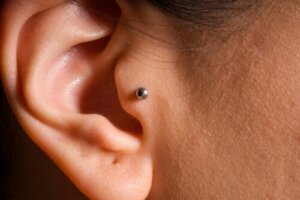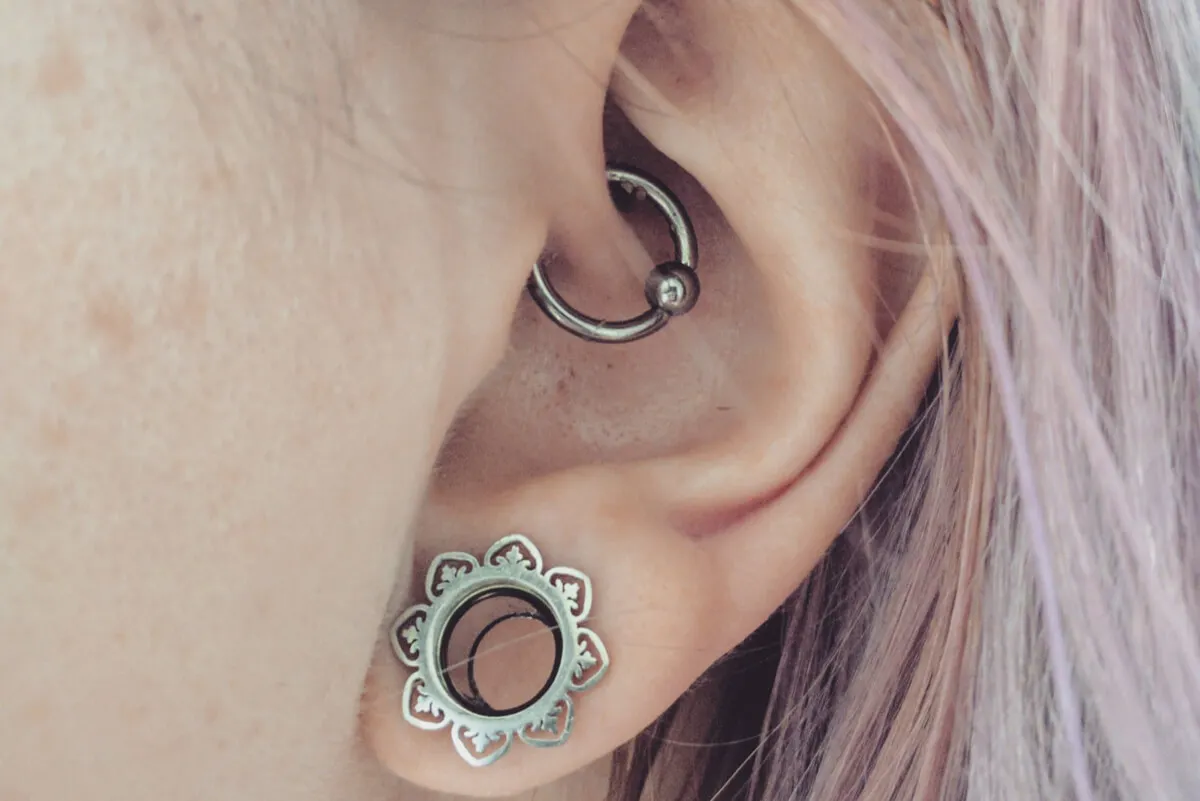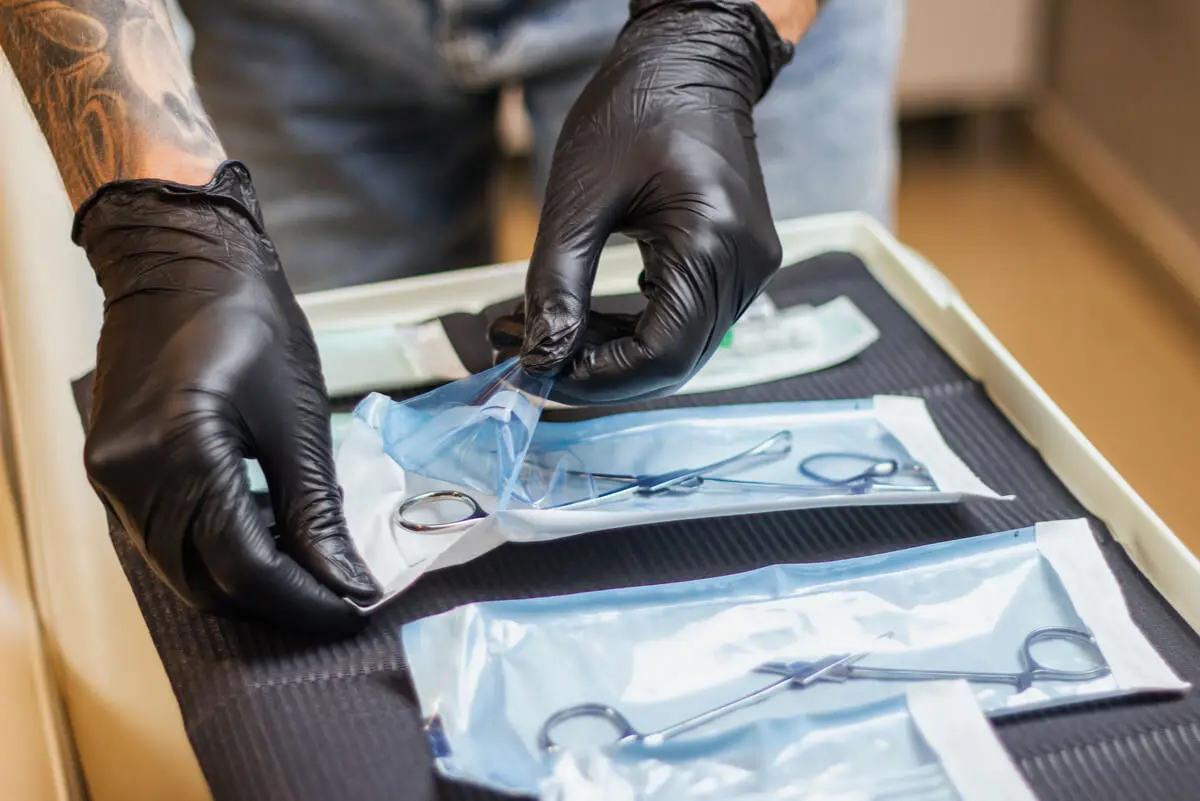Piercing Rejection: Causes, Treatment and Prevention

Piercing rejection is a complication that can occur with an earring or piece of jewelry, which has been inserted in some part of the body, after the body has been pierced to make way for it.
This complication isn’t the most common side effect of a piercing. The most common are the appearance of keloids, infections, and dermatitis. But it certainly is possible for a piercing rejection to occur. We’ll explain why it happens, how to treat it and how you can prevent it.
What is piercing rejection?
Your body has a self-defense system called the immune system. It works by recognizing foreign substances called antigens. When these are detected by various types of cells it triggers the production of antibodies in B lymphocytes.
In turn, these cells are able to remember so that when foreign elements re-enter the body, antibodies are produced immediately. However, such substances can’t destroy foreign agents on their own. That’s when T-lymphocytes and phagocytes come into play.
This whole system is triggered when you’re injured, and that’s what happens when you get a piercing. The body doesn’t know you did it because you wanted to and the symptoms of piercing rejection are due to a common immune response.
Read also: The Role of Zinc in Strengthening Your Immune System
What are the symptoms associated with piercing rejection?
Rejection can occur weeks, months, and in rare cases, even decades after the piercing is carried out. To know if your body is rejecting the piercing you should take a good look at the area and see if it shows any of these signs:
- The item has moved from its original position.
- The amount of tissue between the inlet and outlet holes is thinner.
- In addition to that, the holes have increased in size.
- The earring or other item starts to hang differently.
- The skin between the inlet and outlet holes is scaly, peeling, red and inflamed, calloused or hard looking.
- You may see the jewelry through the skin.

Why does piercing rejection occur?
When the skin is injured, it goes through a scarring process that begins with inflammation and ends with the formation of scar tissue. What happens is that often the body tries to remove the item of jewelry in order to heal the hole.
Part of wound healing involves the skin reattaching itself. This is why the holes close up when we pull the jewelry out. Although there’s no specific cause for this to happen, it’s believed that there are certain factors that may be conducive to this.
- Genetics is one such factor, and some people are more predisposed to reject foreign materials.
- The size and shape of the ring is another influential factor, as ill-fitting jewelry is often the initial cause of the problem.
- Another relevant factor is the metal the jewelry is made of. Titanium, for example, is better for people with sensitive skin.
- It’s also said that the place where it’s placed has an influence. The places where most piercing rejections occur in the navel and eyebrows.
How to deal with piercing rejection
If you experience piercing rejection it can be quite upsetting because things haven’t turned out as you wanted. However, there are ways you can deal with the problem.
- To begin with, take the item of jewelry out if you see that it’s increasingly moving towards the surface.
- Another measure you can take is to try a different type of jewelry, with a different size and material. It’s advisable to opt for a non-irritating plastic ring or bar.
- Use some oil or cream with vitamin E to reduce scarring.
The professional who carried out the piercing is the one who should instruct you about it. You should almost always wait a year before trying another piercing.
Discover more here: I Have a Lump Around a Piercing: What Can I Do?
Prevention and care

Before getting a piercing, look for a qualified professional with experience. You should always ask about rejection rates in the area where you would like to have the piercing done. Remember that piercings can leave visible scars.
To reduce the chance of rejection you should request a large gauge or width. Also, keep the area clean with a salt water compress. Soak a clean gauze pad in the solution and apply it to the new piercing.
You should apply healing treatment only twice a day, as excessive treatment can irritate the skin, which delays healing. Wash your hands with water and antibacterial soap before touching or cleaning the piercing or jewelry.
Also, to ensure the healing process is successful, and that there’s no rejection of the piercing it’s advisable to have a good diet and avoid stress. This will help the immune system to heal the area without too many problems.
Other factors that should be taken care of and require attention are the cleanliness of the tools that were used during the piercing and the hygiene of the jewelry you’re going to wear.
When to see a doctor?
If you experience symptoms of infection or allergic reaction due to piercing rejection, such as fever, chills, rash, shortness of breath, or chest pains, you should see a doctor immediately. Don’t attempt to remove the item yourself, as you may cause further damage to your skin.
All cited sources were thoroughly reviewed by our team to ensure their quality, reliability, currency, and validity. The bibliography of this article was considered reliable and of academic or scientific accuracy.
- Sung, Calvin T., Brian C. Machler, and Sharon E. Jacob. “Piercing metal contact allergy: nothing gold can stay.” Dermatitis 29.4 (2018): 227-228.
- Schuttelaar, Marie LA, et al. “Prevalence of contact allergy to metals in the European general population with a focus on nickel and piercings: The EDEN Fragrance Study.” Contact Dermatitis 79.1 (2018): 1-9.
- Van Hoover, Cheri, Carol‐Ann Rademayer, and Cindy L. Farley. “Body piercing: motivations and implications for health.” Journal of midwifery & women’s health 62.5 (2017): 521-530.
- Fornos Viéitez, Benedicto . Complicaciones de los piercings. Enfermería Dermatológica. 1. 2 (2007). 7-11,
This text is provided for informational purposes only and does not replace consultation with a professional. If in doubt, consult your specialist.








